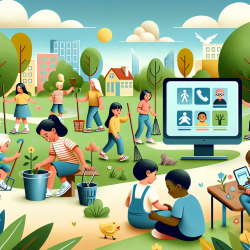The intersection of disability and poverty presents complex challenges, particularly in regions like Zimbabwe. A recent study, "Exploring structural violence in the context of disability and poverty in Zimbabwe," sheds light on these challenges, offering valuable insights for practitioners. This blog explores how you can implement the outcomes of this research to improve your online therapy services for children.
Understanding Structural Violence
Structural violence refers to social structures—political, economic, legal, and ecological—that contribute to the impoverishment and suffering of individuals or communities. This study, conducted among the Tonga ethnic group in Zimbabwe, identified four main themes of structural violence: internal displacement and development, food and politics, water and sanitation, and social services.
Key Findings and Their Implications
The research found that structural violence exacerbates the difficulties faced by families of children with cerebral palsy. Here are some key findings and how they can inform your practice:
- Internal Displacement and Development: Forced displacement disrupted the socio-economic and cultural environment of the Tonga people, leading to chronic poverty and lack of support for disabled children. As a practitioner, understanding these background factors can help tailor your therapy sessions to address not just the immediate needs of the child but also the broader socio-economic challenges faced by the family.
- Food and Politics: Political interference in food distribution led to chronic malnutrition among children, exacerbating their disabilities. Incorporating nutritional advice and support into your therapy sessions can be crucial. Collaborate with local NGOs to ensure families have access to necessary food supplies.
- Water and Sanitation: Lack of clean water and proper sanitation contributed to high infant mortality and poor health. Advocate for better living conditions as part of your therapy goals. Educate families on hygiene practices that can be managed within their constraints.
- Social Services: Limited access to healthcare and rehabilitation services was a significant barrier. Use telehealth to bridge this gap. Provide virtual consultations and therapy sessions to reach children in remote areas.
Actionable Steps for Practitioners
To implement these insights effectively, consider the following steps:
- Holistic Assessment: Conduct comprehensive assessments that consider the child's environment, family dynamics, and socio-economic status.
- Collaborative Approach: Work with local organizations to provide integrated support services, including nutritional aid and hygiene education.
- Advocacy: Advocate for policy changes that address the root causes of structural violence, such as access to clean water, food security, and healthcare services.
- Telehealth Solutions: Utilize online platforms to deliver therapy sessions, making it easier for families in remote areas to access services.
Encouraging Further Research
The complexities of structural violence and its impact on disability and poverty require ongoing research. Encourage your peers to explore these issues further to develop more effective interventions.
Conclusion
By understanding and addressing the broader socio-economic factors affecting children with disabilities, practitioners can significantly improve therapy outcomes. Implementing insights from research on structural violence can lead to more holistic and effective therapy practices.To read the original research paper, please follow this link:
Exploring structural violence in the context of disability and poverty in Zimbabwe.










